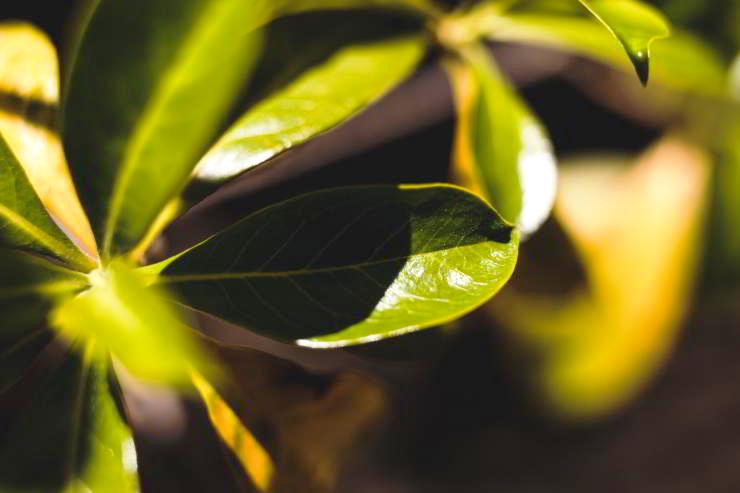It is a tropical plant that thrives in the medium to low altitudes of dry woodlands or grasslands. Laboratory tests indicate that the plant is also effective against several diseases, including malaria, sickle cell anaemia, diabetes, and worms.
Zanthoxylum chalybeum, also called ‘knob wood’ in English, is a deciduous spiny shrub. In Greek, Zanthoxylum means ‘yellow wood’. In fact ‘xanthos’ means yellow and ‘xylon’ means wood. The species epithet ‘chalybeum’ means steel grey. This is a tropical plant that grows in medium to low altitudes of dry woodland or grassland. In sub-Saharan Africa, knob wood is found distributed in several countries including, Burundi, the Democratic Republic of Congo, Ethiopia, Kenya, Lesotho, Malawi, Mozambique, Namibia, Rwanda, Somalia, South Africa, Swaziland, Tanzania, Uganda, Zambia and Zimbabwe.
The tree grows up to 12 metres high with a rounded crown but open canopy and a pale grey bark which is smooth and dark with scales and prickles. Its trunk has characteristic large, conical, woody knobs with sharp prickles and the branches also bear scattered thorns with conspicuous dark scales. The leaves are compound, usually with shiny leaflets, oblong to elliptic or lanceolate 2.5-7 x 1-2.5 cm.
They have a strong citrus-like smell when crushed. The flowers are produced just below the leaves at the base of the new branchlets and are sweet-scented, inconspicuous and yellowish-green in colour, in short sprays (racemes or panicles) 5-10 cm long. Its fruits are spherical, about 5 mm in diameter, reddish-brown, splitting to allow the shiny black seeds to partly protrude.
In ethnomedicine, Zanthoxylum chalybeum is used in the treatment of various ailments. Its aromatic leaves, shoots and fruits are used to make a variety of tea-like beverages.
The root decoction has been used in some communities in Africa as a natural product for managing sickle cell disease, treating fever, malaria and worms, yellow fever, body pains, elephantiasis, toothache, diabetes, sexual impotence, gonorrhoea, malaria, dysmenorrhoea and abdominal pain.
The dried root powder can be added to porridge or tea to treat asthma and abdominal pain. The leaves can also be cooked and eaten as a vegetable. This is done by soaking the tender vegetable leaf powder in hot water and then stirring it into a thick vegetable paste. The vegetable paste is then mixed with groundnut paste and eaten with a staple food such as maize flour bread or boiled cassava.
The root decoction, mixed with other plants, is also taken to treat a rare disease called bubonic plague caused by bacterial infection with symptoms of fever, headaches, and vomiting with swollen lymph nodes. An infusion of crushed leaves is drunk to treat convulsions, oedema, swollen legs, body pains, and psychiatric problems.
The crushed leaves are also applied to treat snakebites. The stem bark is also useful when chewed to treat toothache. However, it’s important to note that the stem bark decoctions are also widely taken to treat malaria, fevers and headaches, sickle cell disease, respiratory tract ailments including colds and tuberculosis, skin diseases including ulcers, urticaria, tumours and measles, intestinal problems including abdominal pain, diarrhoea, intestinal worms, bilharzia, amoebas, colic, general body pain and vomiting.
The traditional healers also crush the root or stem bark and apply it as a treatment for sores, wounds and tumours. In some instances, they make their patients inhale the smoke from burning stem bark to stop fainting, dizziness and headache. The hot and peppery fruits are chewed as breath fresheners and for treatment of fever, sore throat, severe colds, pneumonia, and chest pain. An infusion of the fruits or leaves is given as a tonic to children. The pounded seeds or fruit in tea or in milk are used to treat sore throat and tonsillitis.
In Eastern Africa, Zanthoxylum chalybeum is one of the many traditional plants with several medicinal uses. For instance, in Uganda, the mixture of its leaves, stem bark, and roots is added to food to treat fever and colds, malaria, measles, skin infections and coughs. In Tanzania, a paste from the root bark is applied to swellings, hernia and rheumatism, while a decoction of the root bark with other medicinal plants is administered to treat asthma. In some communities, the twigs of the plant and roots are used as chewing sticks for the treatment of toothache and for maintaining healthy teeth.
In Somalia, the leaves of Zanthoxylum chalybeum have been reported to be used against stomach pain and urinary retention while the bark decoctions are said to cure malaria and a decoction of the bark and roots is used as a remedy for malaria, generalized body pains, coughs, scorpion bites, snakebites, oedema, anaemia, and body swellings.
In treating body pain, the bark and root powder is mixed with oil and applied as a liniment on the affected part. The shiny black seeds are also used to decorate dresses while the twigs are used to smoke the inside of milk gourds, to clean and disinfect them. The ash of young leaves, together with animal fat and soda, are made into soap.
Indeed, laboratory scientific tests indicate that Zanthoxylum chalybeum is effective in several diseases including malaria, sickle cell anaemia, diabetes and worms. This indicates that it has future pharmaceutical applications.
Apart from ethnomedicine, Zanthoxylum chalybeum produces very hard, heavy, elastic and highly durable wood used for carving, turnery, building poles, bedsteads, spoons, stools, drums, and walking sticks. It also produces good firewood that burns with ease.
In conclusion, Zanthoxylum chalybeum remains one of the most important medicinal plants that can be used in the production of future pharmaceutical drugs. However, it’s important to note that owing to its extensive use as a source of valued food and medicinal products, the plant’s wild population has been greatly reduced in many areas, becoming endangered. Strict measures ought to be taken to protect this plant from extinction. (Komakech Richard & Omujal Francis) – (Photo: 123rf)







